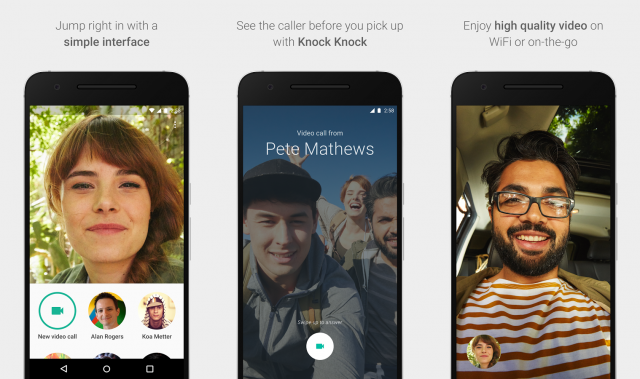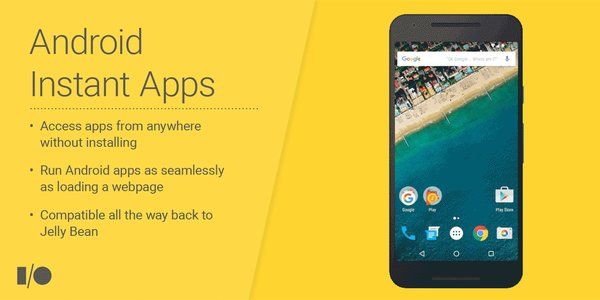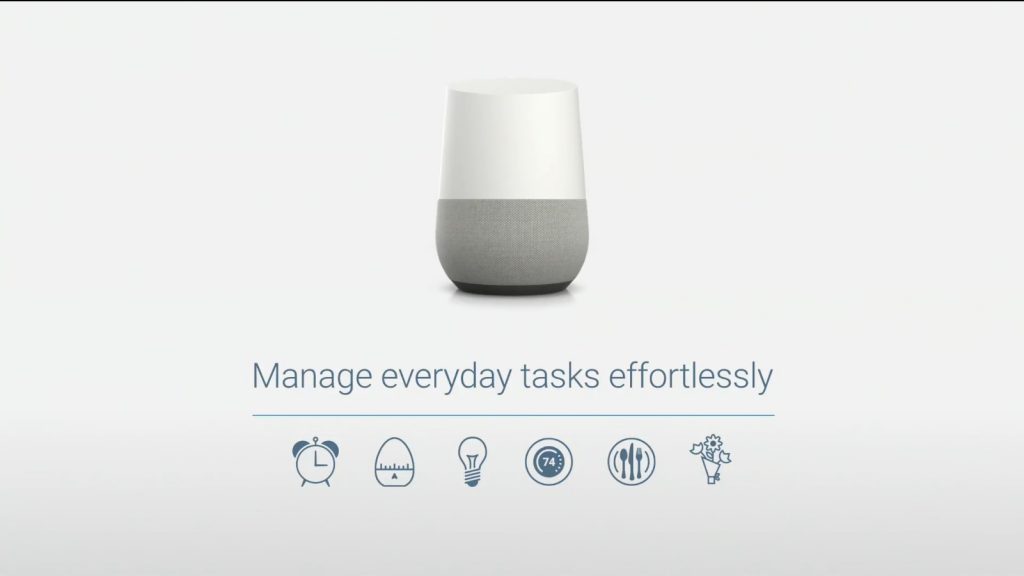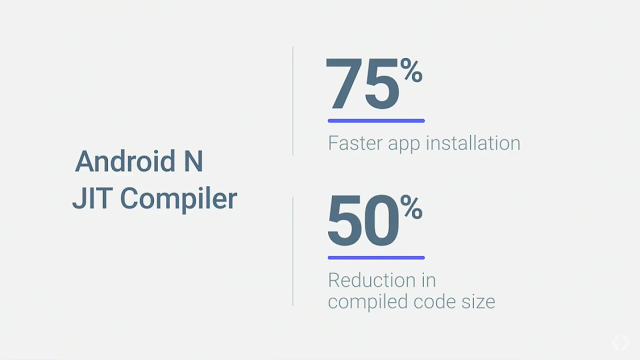
Google I/O is this big Developers Conference that Google organizes each year where Developers from all over the world gather to see the road-map from Google, of where it’s heading or what Google products are in development. This is the time of the year, where every new version of Android used to be introduced but this time, the developer version of Android N was launched earlier and only some handful of improvements to Android N were showcased, but what N stands for still remains a mystery. Including that there were a lot of things that were showcased on Google I/O. Here are few important keynotes from the Google I/O.
1. Google Allo and Duo

Google Allo is an instant messaging app which is powered by Google’s AI or now what Google calls it as “Assistant”. With Google Allo, instant messaging becomes more fun with smart replies suggested by the app itself based on the questions asked. Like Google Now On Tap, it scans the texts and images on the screen and suggests users with useful replies and cards. The main focus of the app is to make the chats more human like, so there are many small elements to make things more intuitive, like when you are about to send a message you can drag the send button up or down to increase or decrease the size of text, meaning you’re whispering something or shouting out loud. If you don’t want to use the Google Now Voice Service, you can just chat with the Google Assistant and ask for questions that you’d normally ask on Google Now. Also, privacy has been a crucial thing when it comes to messaging, so Google doesn’t keep record of the things it scans while you chat, also you have the option for private messaging where you get End-to-End Encryption.

Duo is what Google claims to be the fastest video calling platform with the use of WebRTC. This app seems like a competition to Apple’s Face Time as the app is getting released on both Android and iOS. Google claims the Duo has been optimized in such a way that it runs even on low latency. Even though the UI is very minimal, a lot of things are going inside making it one heck of a fast and easy to use video messaging platform. The moment you call someone, you instantly get the video feed of that person before they even pick up the call, which seems like a major privacy issue to me. There might be an option to turn it off or enable it for only certain contacts.
What’s even great is that you can switch between mobile data and wifi without getting disconnected from the call.
But to sum it up, Google already has an IM app, Hangouts! Which hasn’t been able to live up to its competitors. Users have been complaining a lot about App fragmentation as Google has a lot of apps to do similar tasks and what a single app could to it has scattered that into multiple apps/products.
2. Android Instant Applications
Android Instant Apps is a revolutionary feature which will redefine how we use an app. Most of the time we don’t carry around the app we use the least, but there might be times when you need the app instantly for something, let’s say shopping. So, when you search for a product online, instead of going to the web page of the product you are greeted with the site’s app instead, where you’ll have an easier time navigating around to buy products and pay for them if you have Android Pay available. Another example is: if someone sends you a link t a YouTube video but you don’t have the YouTube app installed on your device, when you click on the link of the video, the instant app instantly launches the temporary YouTube app enabling you to watch the video. This is possible because the app is installed from the server instantly and if you want to install the app permanently you can do so by the install option you get on the notification drawer.
3. Google Home
The future is full of Internet of Things(IoT), even if we’re ready or not, Google certainly is. For the last few years, we saw many IoT tech like the smart bulbs, smart kitchen accessories, security systems and the Digital Home Assistant Amazon Echo. For all the IoT devices to sync and to control some of them, you need a central hub this is where the Google Home comes in. If you’re familiar with the Amazon Echo, it’s exactly the same, but it comes with the power of Google which means you have boarder usability. With Google Home Smart Assistant, you can easily ask questions, request services and many more. Google has yet to announce the comprehensive details about the Google Home but for the time being it still already feels pretty awesome.
4. Android N Improvements
Android N is the next big update on the Android OS, which is yet to be released for the masses. Only the Developers are using it for testing and bug report but it will soon be out in late Fall for the public. Android N will more or less completely change how we use our Android devices. Though on the surface it looks similar to the lollipop but there are a lot of new features and design overhaul aiming to make Android experience even great and interactive.
Android N now comes with Vulkan graphics API which will give developers direct access to the GPU for better 3D graphics in games and apps. JIT compiler has been added which makes Android a whole lot faster, with JIT you can now install apps 75% faster than on Lollipop. Android N is also the first mobile platform to get the Unicode 9 emoji standard with the inclusion of 72 new emojis. And finally, we get the Clear All button on the top right corner which users have been demanding for a very long time. But the top right position is rather uncomfortable for a large device. For better memory management, the apps on the multitasking window are automatically removed if they are left idle for a long time. And security has been a major focus on Android N, now android has File based Encryption, Media Framework Hardening, and Seamless Android Updates.
5. Google Daydream
Google Daydream is all about enabling very high quality mobile VR experience. The new Virtual Reality mode is baked into Android N system. Google Daydream just won’t run on any device, you need a Daydream ready phone with high end sensors, display and processors. With Google Daydream, Google will be launching VR headset, VR controller that is optimized for VR that is both powerful and intuitive, also there will be Google Play for VR where you’ll be able to download VR apps, movies, videos and other cool stuffs. Apps like Google Play Movies, Google Street View and Google Photos will be some of the early VR compatible apps from Google. You’ll even have a VR system UI in the future where you’ll be able to interact with your device.
6. Android Wear 2.0
Android Wear 2.0 is the biggest update for Android Watches. Android Wear 2.0 for Developers is now available for download. Android Wears are something that is increasing gradually, there are a lot of brands showcasing their smartwatch which usually runs on Android but all of them had to depend mostly on the Smartphone to work properly. With the introduction of Android Wear 2.0, you can now have standalone apps for the watch which earlier required to sync with mobile app, there’s better support for third-party watch faces and the new Carousel app launcher is much improved compared to earlier launcher. The UI has been overhauled for easier navigation, input and showing results. You also get the intelligent message reply/suggestions, you’ve even got a keyboard for Android Wear now!













![Best Gaming Laptops in Nepal Under Rs. 250,000 (रु 2.5 Lakhs) [2025] Best Gaming Laptops Under 2.5 lakhs in Nepal [Feb 2025 Update]](https://cdn.gadgetbytenepal.com/wp-content/uploads/2025/02/Best-Gaming-Laptops-Under-2.5-lakhs-in-Nepal-Feb-2025-Update.jpg)
![Best Gaming Laptops in Nepal Under Rs. 120,000 (रु 1.2 Lakhs) [2025] Best Budget Gaming Laptops Under Rs 120000 in Nepal 2025 Update](https://cdn.gadgetbytenepal.com/wp-content/uploads/2025/05/Best-Budget-Gaming-Laptops-Under-Rs-120000-in-Nepal-2024-Update.jpg)
![Best Laptops Under Rs. 80,000 in Nepal [2025] Best Laptops Under 80,000 in Nepal March 2025 Update](https://cdn.gadgetbytenepal.com/wp-content/uploads/2025/03/Best-Laptops-Under-80000-in-Nepal-March-2025-Update.jpg)
![Best Gaming Laptops in Nepal Under Rs. 200,000 (रु 2 Lakhs) [2025] Best gaming lapotp under 2 lakhs Nepal Feb 2025](https://cdn.gadgetbytenepal.com/wp-content/uploads/2025/01/Best-Gaming-Laptops-Under-2-Lakh-Nepal-Feb-2025-Update.jpg)

![Best Mobile Phones Under Rs. 15,000 in Nepal [Updated 2025] Best Phones Under 15000 in Nepal 2024 Budget Smartphones Cheap Affordable](https://cdn.gadgetbytenepal.com/wp-content/uploads/2024/03/Best-Phones-Under-15000-in-Nepal-2024.jpg)
![Best Mobile Phones Under Rs. 20,000 in Nepal [Updated] Best Mobile Phones Under NPR 20000 in Nepal 2023 Updated Samsung Xiaomi Redmi POCO Realme Narzo Benco](https://cdn.gadgetbytenepal.com/wp-content/uploads/2024/01/Best-Phones-Under-20000-in-Nepal-2024.jpg)
![Best Mobile Phones Under Rs. 30,000 in Nepal [Updated 2025] Best Phones Under 30000 in Nepal](https://cdn.gadgetbytenepal.com/wp-content/uploads/2025/01/Best-Phones-Under-30000-in-Nepal.jpg)
![Best Mobile Phones Under Rs. 40,000 in Nepal [Updated 2025] Best Phones Under 40000 in Nepal 2024 Smartphones Mobile Midrange](https://cdn.gadgetbytenepal.com/wp-content/uploads/2024/02/Best-Phones-Under-40000-in-Nepal-2024.jpg)
![Best Mobile Phones Under Rs. 50,000 in Nepal [Updated 2025] Best Phones Under 50000 in Nepal](https://cdn.gadgetbytenepal.com/wp-content/uploads/2025/01/Best-Phones-Under-50000-in-Nepal.jpg)
![Best Flagship Smartphones To Buy In Nepal [Updated] Best flagship phone 2025](https://cdn.gadgetbytenepal.com/wp-content/uploads/2024/07/Best-Flagship-Phones-who-is-it-ft-1.jpg)